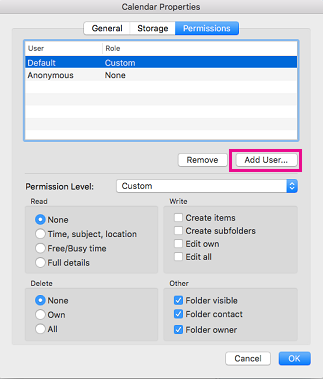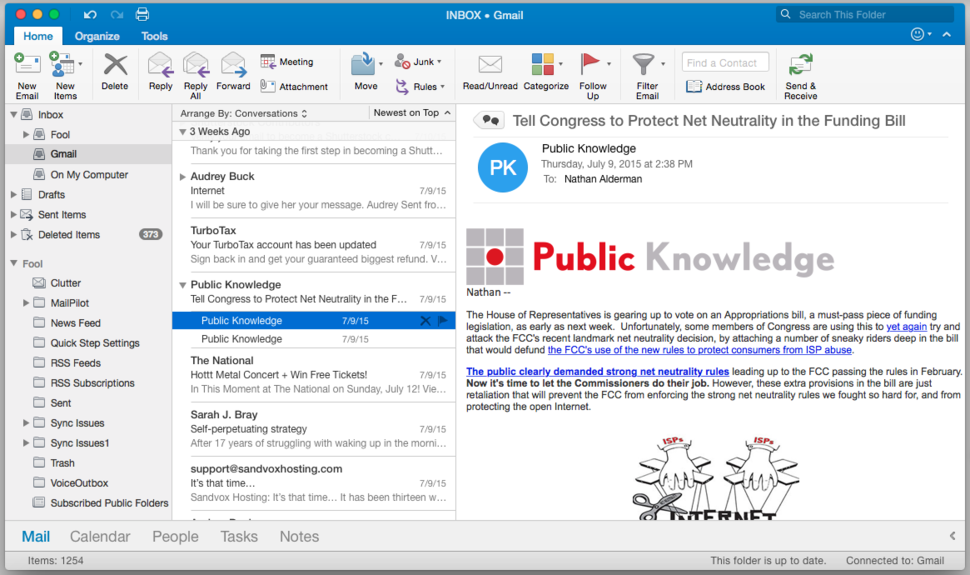Schedule (Invite) a Resource The default setting is that anyone using Exchange Calendar can schedule a resource. However, the owner can change this so that, when someone includes the resource as an invitee to a meeting, the owner (or someone delegated by the owner) approves or denies the request. When 'invite' the resource by adding them the same way you would add a person. Once you've added the resource to your invitation, review its free/busy time on the Scheduling tab, just like you would for the people you've invited. Resource Accounts do not allow scheduling conflicts; that is, if the resource already has an event scheduled for a particular time, no one else can 'invite' the resource to another event. See the Calendar for a Resource where You Have Access Rights See our article. See the Calendar for a Resource that Has Been Shared With You The default setting is that anyone can see a resource's free/busy status by using the Scheduling tab to set up an event.

Work With Resource Accounts In Outlook 2016 For Mac Download
In order to view a Resource Account's calendar directly, like you'd view your own calendar, the owner (or someone delegated by the owner) must give you access permissions. If the resource owner has granted you viewing or editing permissions, you can open the resource's calendar in the same way that you'd. How to Change the Settings for a Resource.
Tasks Involved. To get started:. Open Outlook 2016 from your Start menu. If you've never used Outlook before, you'll be prompted to create a new account.

Click Add Account under Account Information. From the Add Account screen, you can either continue with Auto Account Setup, or select Manual setup or additional server types at the bottom to set up your account manually. Auto Account Setup Outlook 2016 support Autodiscover; it automatically configures the server settings using just your email address and password. It's that easy! On the Add Account screen, enter the following information:. Your Name: Your first and last name or desired display name. Email Address: Your email address. Outlook mac app download.
Password: Your email password. Retype Password: Your email password, again.
Outlook 2016 For Mac Repair
Click Next. Outlook will connect to your mail server and auto-configure your settings for a secure IMAP connection.
Auto Account Setup If the setup doesn't complete, Outlook will ask you to try again using an unencrypted connection to the mail server. If that doesn't work, choose the option to set up your account manually. For questions about email settings in general or if you need to locate your, please refer to our Email Client Setup article. Manual Account Setup Autodiscover doesn't work for every email account, but you can always configure Outlook manually. We recommend setting up a secure connection to the mail server by using the Private (with SSL) settings, which can be found on the Email Configuration Settings page in your control panel, so keep that page nearby!
If you don't have access to the control panel, you can set up Outlook using our Standard (without SSL) settings. Follow these steps to manually configure your email client:. From the Add Account window, select Manual setup or additional server types at the bottom, and click Next. Type your account information:. Your Name: Type your first and last name. Email Address: Type your email address.
Account Type: Click the drop-down menu and select IMAP or POP. We recommend IMAP. Mail Servers: Your incoming and outgoing mail servers are the same. Use mail.example.com, where example.com is your domain name. User Name: Type your email address.
Password: Type your email password Manual Account Setup. Click More Settings. In the General tab, type the name by which you want to refer to this email account. Click the Outgoing Server tab. Check the box indicating your outgoing server requires authentication, and select the option to use the same settings as your incoming mail server. Click the Advanced tab. The server port numbers you'll type here depend on the account and connection type you're setting up.
Refer to your Email Configuration Settings, as necessary. Click Okay. If prompted, enter your username (email address) and email password, check the box to save your password, and then click OK.
At this point, Outlook will configure your mail client by testing your account settings to ensure it works properly. Once the tests have completed successfully, click Close. You're all set! Click Finish to proceed to your account. If you have any trouble configuring Outlook, double check the settings you've entered and make sure your DNS settings are pointed to Bluehost.
If your domain isn't registered with Bluehost, you may need to update your name servers or MX records.